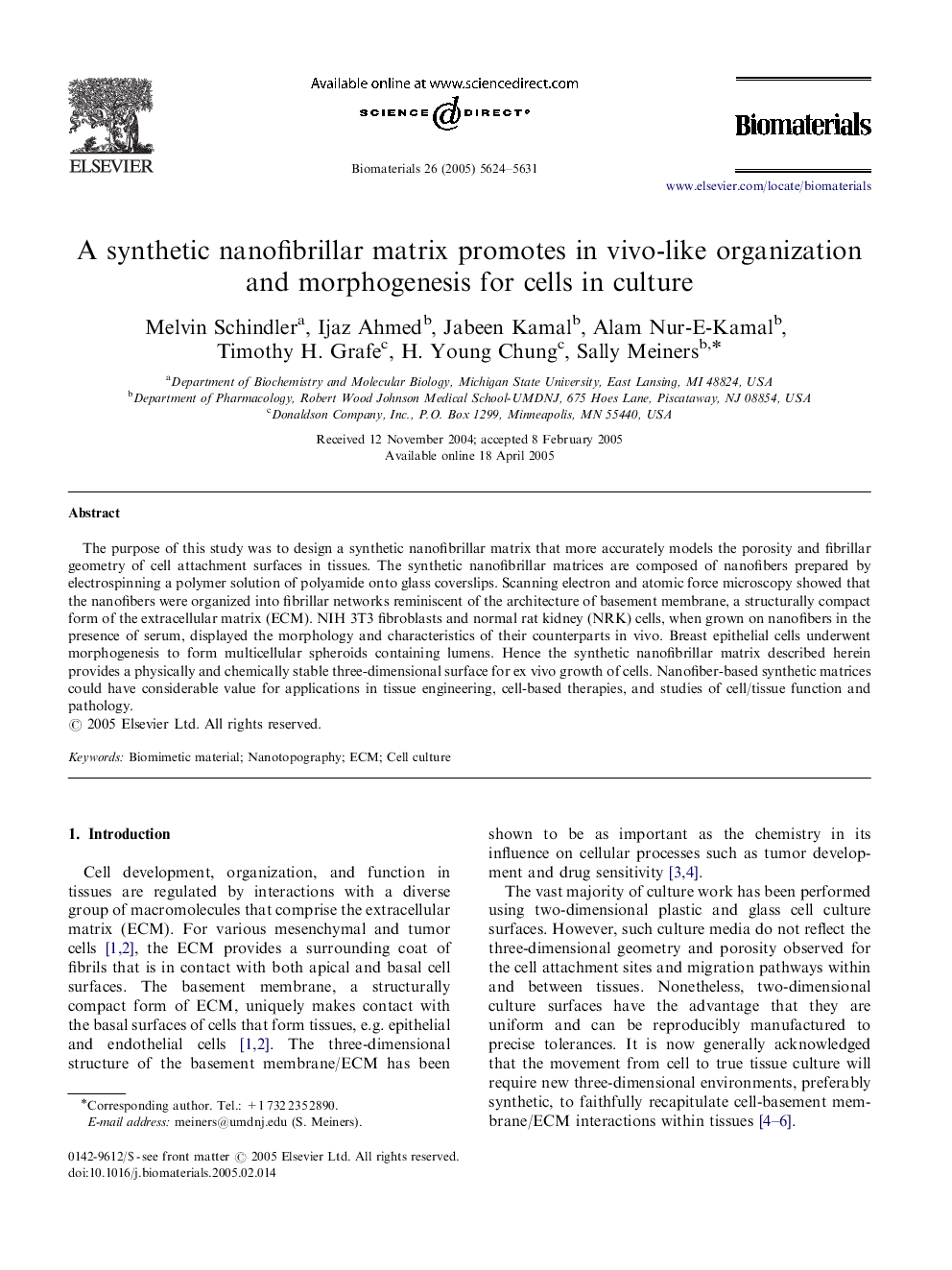| Article ID | Journal | Published Year | Pages | File Type |
|---|---|---|---|---|
| 11068 | Biomaterials | 2005 | 8 Pages |
The purpose of this study was to design a synthetic nanofibrillar matrix that more accurately models the porosity and fibrillar geometry of cell attachment surfaces in tissues. The synthetic nanofibrillar matrices are composed of nanofibers prepared by electrospinning a polymer solution of polyamide onto glass coverslips. Scanning electron and atomic force microscopy showed that the nanofibers were organized into fibrillar networks reminiscent of the architecture of basement membrane, a structurally compact form of the extracellular matrix (ECM). NIH 3T3 fibroblasts and normal rat kidney (NRK) cells, when grown on nanofibers in the presence of serum, displayed the morphology and characteristics of their counterparts in vivo. Breast epithelial cells underwent morphogenesis to form multicellular spheroids containing lumens. Hence the synthetic nanofibrillar matrix described herein provides a physically and chemically stable three-dimensional surface for ex vivo growth of cells. Nanofiber-based synthetic matrices could have considerable value for applications in tissue engineering, cell-based therapies, and studies of cell/tissue function and pathology.
